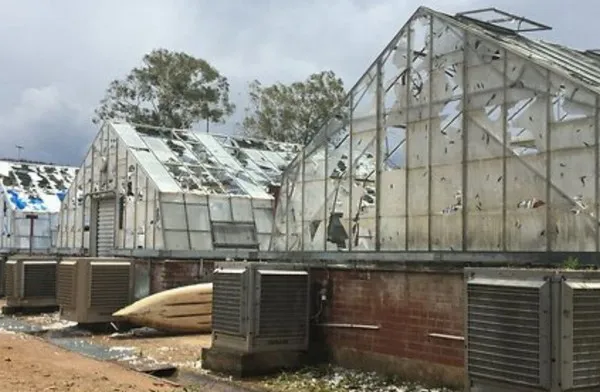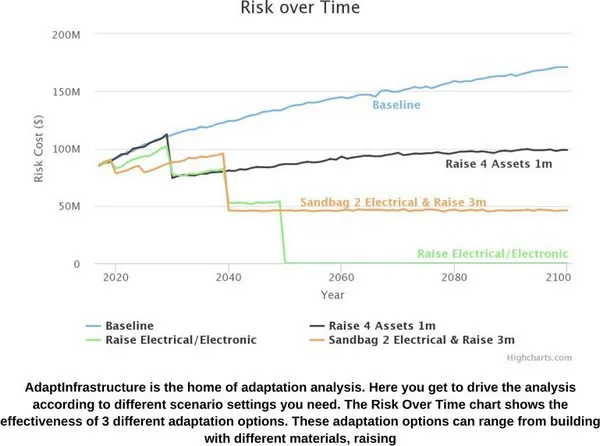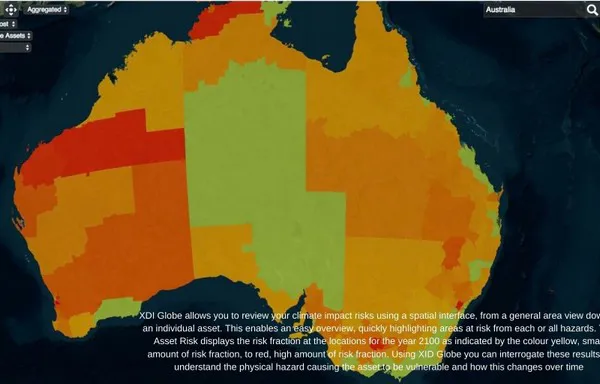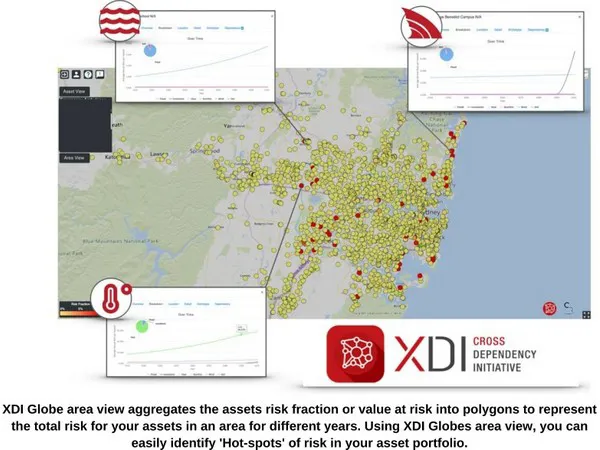Smart businesses are turning to online tools to calculate their vulnerability and reduce their exposure to the worst impacts of climate change.
by Gabrielle Stannus
Is this weather the new summer norm in Australia?
If so, what can your business do to reduce its risk to this new climate?
Accepting some level of risk is standard practice for most businesses. However, what is an acceptable level of climate risk to your business?
Dr Karl Mallon, Director Science and Systems with Climate Risk, shares details of some tools that may help your business calculate its climate vulnerability.
AdaptWater
AdaptWater is a software program enabling users to quantify the climate change risks to multiple assets, assess adaptation options and provide economic modelling for investment decisions.
Developed by Climate Risk in conjunction with Sydney Water and the Water Services Association of Australia (WSAA), AdaptWater focusses on the needs of larger-scale utilities across a range of industry sectors including roads, railways, ports, airports, electricity, gas suppliers and irrigators. Some of these businesses have a large exposure to climate change hazards, e.g. thousands of kilometres of roads, the closure of which to flooding or fire would cause serious disruption to businesses using transportation services.
"Essentially AdaptWater started its life as a way to create a business case for adaptation,” explains Karl, “if I do certain things to adapt to climate change, what are the benefits that I will gain from avoided risks or avoided losses?”
The AdaptWater database addresses multiple risks, including these six climate hazards across five states: saltwater ingress, coastal inundation, riverine flooding, heat wave, bushfire and extreme wind.
Cross Dependency Initiative (XDI)
AdaptWater has since evolved into the
Cross Dependency Initiative (XDI), allowing for multiple, interconnected assets across different industries to be analysed at once. This platform incorporates private data provided by the client with detailed engineering and material specifications to develop a refined understanding of climate vulnerability.
“XDI has the ability for people who know their industry and know what things are going to cost, to identify the extent to which they will protect the asset,” says Karl.
It may prove useful to businesses in the horticultural industry who rely on the continued provision of water and electricity to ensure operational stability.
XDI Easy
For smaller businesses,
EasyXDI allows you to independently investigate your business' climate vulnerability on any asset through a simple on-line user pays system.
“Someone can basically do what is actually a very detailed risk analysis for a given asset in a given location,” says Karl.
EasyXDI uses public asset data against proprietary hazard data, providing on-demand reporting for any address or location across the world. You simply type in an address or drop a pin on a map, then select an infrastructure type from 94 default archetypes covering water, power, telecommunications, roads, trains, transport, housing and health infrastructure.
You can view your results for free. However, the free analysis does not include a hazards breakdown. If the analysis is for commercial application, you will need to purchase the report.
Future proof your investment
Karl claims that overseas investors are now using these tools to make decisions about existing and current investments, with some choosing to relocate their business to more favourable climates.
“You are seeing people start to buy land in the northwest Tasmania which is probably going to have what used to be the climate of Victoria. You are also seeing people buy stations in the Northern Territory where they want to get access to floodwaters,” says Karl.
If you are looking to acquire new land on which to expand, then you could use these tools to identify land with a level of climate risk acceptable to your business.
The flipside?
Potential investors in your business may be using these tools to determine the level of climate risk your business is exposed to, and they may not be liking what they see! If your property is in a zone with a higher than acceptable risk of bushfire or flooding, your investor may not be interested.
What else can you do?
Your business may not be able to afford to move from your current location. However, you can use these tools to identify those climate risks potentially threatening your ongoing viability. You can then develop solutions to either mitigate or adapt to a particular climate change risk, e.g. reduce your reliance on the electricity grid by installing renewable energy systems.
Have a conversation with your water and electricity providers. Have they identified their climate vulnerability using similar tools? How will they guarantee your supply in these times? What else do you need to do as a back-up?
Need more info about climate science and related programs?
Here are some useful sources of information for you to take into these conversations.
Information about Australia's past, current and future climate to help industries, governments and communities plan for and adapt to a variable and changing climate can be found on the
Climate Change in Australia website. 







